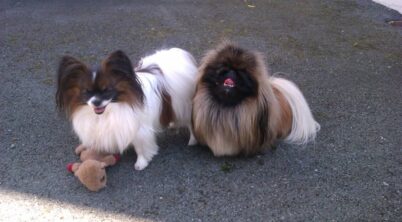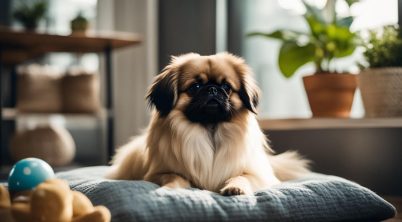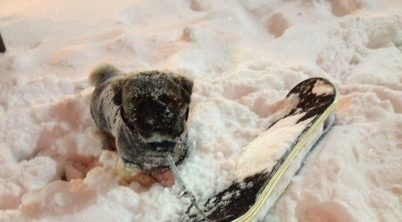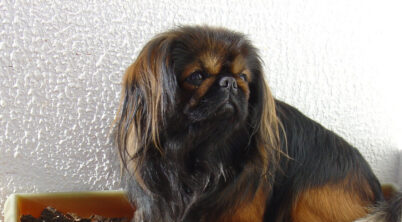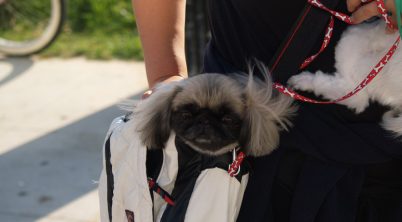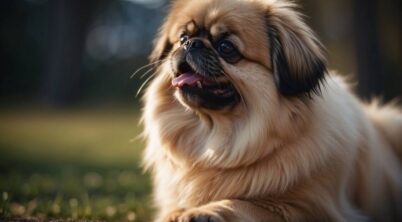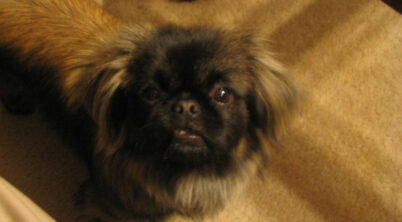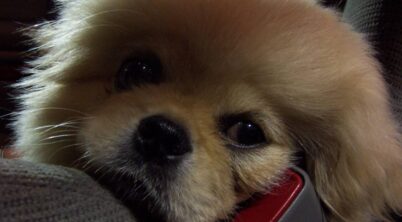Pekingese dogs, with their distinctive lion’s mane and regal demeanor, require consistent grooming to maintain their health and appearance. Nail care, in particular, is an aspect that cannot be neglected. Overgrown nails in Pekingese can lead to a host of issues, from discomfort when walking to more severe joint and posture problems. Proper nail maintenance supports the overall well-being of these dogs, ensuring they can move comfortably and remain active.
Approaching nail care requires an understanding of the tools and techniques that are safe for Pekingese. Use of the correct clippers or grinders, along with knowledge of the quick’s location—a blood vessel within the nail—is critical to avoid injury during trimming. Regular nail care not only contributes to the Pekingese’s mobility but also prevents damage to floors and furniture from sharp nails.
Moreover, grooming doesn’t end with nail trimming. Pekingese also benefit from paw care, including the inspection and cleaning of the paw pads and between the toes to prevent infections. Attention to these details complements the overarching grooming routine, which encompasses coat maintenance and hygiene, to uphold the Pekingese’s celebrated splendor.
Pekingese Nails
The grooming of a Pekingese’s nails is an essential part of their care routine. These dogs, with their regal mane and unique stature, need their nails kept at an appropriate length to maintain good posture and mobility. When their nails grow too long, it can lead to discomfort, altered walking patterns, and even joint problems.
Trimming Tips:
- Frequency: It is advisable to trim a Pekingese’s nails every few weeks or as needed, when you hear them clicking against hard floors.
- Tools: Utilize specially designed canine nail clippers or grinders for accuracy and safety.
- Technique: Cut small pieces from the tip to avoid reaching the ‘quick’, where blood vessels and nerves end. If you can see a small pink section through the nail, steer clear as this is where the quick begins.
Handling Nails:
- Paw Handling: Regularly touch the Pekingese’s paws to get them accustomed to handling, reducing stress during nail trimming sessions.
- Cutting Angle: Hold the clippers at a slight angle, aligning with the natural curve of the nail.
- Dewclaws: Don’t forget the dewclaws if present; these are higher up on the paw and can easily be overlooked.
Accidents: In case you accidentally clip the quick and the nail starts to bleed, be prepared with styptic powder or a styptic pencil to stop the bleeding.
By maintaining a consistent nail care routine, owners can ensure their Pekingese walks comfortably and remains happy. Regular inspection and grooming of the nails are integral to this breed’s overall well-being.
Understanding Pekingese Grooming Needs
Regular grooming is essential for maintaining the health, comfort, and appearance of a Pekingese. Their distinct double coat poses unique challenges that require specific attention.
Significance of Regular Grooming
Regular grooming is crucial for Pekingese dogs to prevent common issues such as matting and tangles in their fine undercoat, which can cause discomfort and health problems if left unattended. Proper grooming techniques play a significant role in managing their shedding and preserving the dog’s distinctive appearance.
- Health: Untangled and well-groomed coats keep skin conditions at bay and reduce the risk of infections.
- Comfort: A mat-free Pekingese is a comfortable one, with grooming aiding in temperature regulation.
- Appearance: Grooming maintains the breed’s lion-like mane and overall majestic look.
Unique Challenges With Pekingese Coats
Pekingese have a luxurious double coat that requires special attention to prevent matting and to manage shedding. Their undercoat is soft and dense, leading to the formation of mats if not brushed regularly.
- Undercoat and Shedding: Frequent brushing helps distribute natural skin oils and reduces loose hairs from the undercoat.
- Matting and Tangles: Specialized grooming tools are recommended to gently remove tangles and prevent mats without causing harm to the Pekingese’s sensitive skin.
- Grooming Tools: Options include a de-matting comb, slicker brush, and undercoat rake to effectively groom the thick Pekingese coat.
Tools and Products for Pekingese Grooming
Proper grooming of a Pekingese not only ensures their coat remains healthy and mat-free, but also that their nails are kept at an appropriate length. Below are the key tools and products needed for effective grooming.
Essential Grooming Tools
For maintaining a Pekingese’s coat, several tools are indispensable. The slicker brush is crucial for detangling and removing loose fur, while a pin brush can be used for finishing touches, ensuring a smooth and lustrous coat. To prevent mats, a de-matting tool or mat splitter may be necessary for working through tougher knots. A comb, especially one with fine and coarse teeth, can help with detailing work around the face and paws.
Nail care is as important as fur care, and a good nail clipper designed for dogs is fundamental for trimming a Pekingese’s nails to a safe length. Due to the risk of cutting into the quick, many owners prefer a clipper with a safety guard.
- Brushes: Slicker brush, pin brush, bristle brush
- Detangling Tools: Comb, de-matting tool, mat splitter
- Nail Care: Nail clipper
Choosing the Right Products
The choice of grooming products such as shampoo and conditioner should be informed by the Pekingese breed’s specific needs. A natural bristle brush can be used to evenly distribute dog-friendly shampoo and conditioner through the coat. Products should be gentle to avoid irritation and designed to maintain the natural oils of the dog’s coat. Additionally, ear cleaner and canine-formulated toothpaste contribute to overall grooming by ensuring cleanliness and hygiene.
Regular use of these tools and products will help keep the Pekingese’s long, straight coat and sensitive skin in excellent condition, while also taking care of their grooming needs from head to toe.
- Shampoos and Conditioners: Dog-friendly, gentle, breed-specific
- Hygiene: Ear cleaner, toothpaste
The Grooming Process Step by Step
Proper grooming of a Pekingese’s nails is a crucial aspect of its overall care routine, ensuring the dog’s comfort and health. Each step, from combing to styling, plays a significant role in preparing for the nail grooming process.
Combing and Detangling the Coat
Before addressing the nails, one must thoroughly comb the Pekingese’s coat. Using a pin brush or slicker brush, a daily brushing routine helps to remove tangles and mats, especially in the areas around the legs and pads where fur can quickly knot. Pay particular attention to the tail and hindquarters to maintain cleanliness.
Bathing and Shampooing
A bath is essential for a clean coat and skin, making nail trimming more hygienic. Using a suitable shampoo for the breed’s coat type, carefully lather and cleanse the Pekingese, avoiding the eyes and inner ears. Shampooing should follow a thorough wetting of the coat to ensure even application and effective dirt removal.
Drying the Pekingese
After bathing, gently towel dry the Pekingese to remove excess water. Follow up with a blow dryer on a low heat setting to ensure the coat is completely dry. This step is crucial; a fully dried coat is easier to brush and keeps the Pekingese comfortable and ready for further grooming.
Haircuts and Styling
If a haircut is needed, it should maintain the Pekingese’s characteristic lion-like mane and avoid cutting the hair too short, so as to protect the skin. Styling should preserve the breed’s natural shape and appearance. Always ensure the fur around the paws and nails is neatly trimmed to facilitate easier nail maintenance.
Maintaining Pekingese Coat Health
Maintaining the health of a Pekingese’s coat involves regular care to prevent matting, skin irritation, and excessive shedding. Due to the breed’s long, luxurious coat, a Pekingese requires consistent grooming.
Brushing Frequency: A Pekingese should be brushed several times a week using the right tools. This frequency helps to reduce shedding and prevents mats from forming in the coat.
- Tools Needed:
- Slicker brush: For removing tangles and loose fur.
- Comb: To smooth the coat and catch any remaining knots.
- Mat splitter or de-matting tool: For stubborn mats that cannot be brushed out.
Technique: Begin brushing at the back and move forward, paying special attention to areas prone to matting. Always brush with the grain of the fur, not against it.
- Skin Irritation: Check the skin for any signs of irritation during each grooming session. This is vital as prompt detection can prevent more severe skin issues.
Preventing Matting: Mats can cause discomfort and even lead to skin infections if the skin underneath is unable to breathe. Regularly removing mats and tangles contributes to overall coat health and comfort.
Shedding Management: The Pekingese is known to shed, particularly during seasonal changes. By increasing brushing frequency during these periods, one can manage shedding and maintain the coat’s health.
Each grooming session represents an opportunity to enhance the dog’s appearance and check for potential health issues. A commitment to routine care ensures both the beauty and well-being of a Pekingese’s coat.
Nail Care for the Pekingese
Proper nail care is pivotal in maintaining a Pekingese’s mobility and comfort. This section will guide you through the essentials of nail trimming to avert injuries and ensure the well-being of your Pekingese.
Trimming Basics
Frequency of Trimming: She should have her nails trimmed regularly to prevent overgrowth, which can lead to discomfort and difficulty walking. As a general rule, if you can hear her nails clicking on the floor, it’s time for a trim.
Tools Required:
- Nail Clippers: Choose a size-appropriate nail clipper for precise trimming.
- Styptic Powder: Keep it on hand to stop bleeding if you accidentally cut the quick.
Procedure:
- Hold Paw Firmly: Gently take hold of your Pekingese’s paw.
- Identify the Quick: Look for the pinkish area within the nail; avoid cutting into it.
- Cut at an Angle: Trim the nail at a 45-degree angle below the quick.
- Take Small Snips: Make small cuts and frequently check to avoid nearing the quick.
- Smooth Edges: Use a file or grinder to round off any sharp edges after trimming.
Avoiding Injuries
Observation: Keep an eye out for signs of pain or infection, such as limping or excessive licking, which could indicate a trimming mishap.
Technique: Trim slowly and hold the clippers steady to prevent splintering or cracking, which can cause injury and discomfort.
Professional Help: If uncertain about the correct procedure or if the Pekingese is anxious, seeking the services of a professional groomer can provide a positive experience and prevent accidental injuries.
By adhering to these guidelines, you can ensure that nail care is a safe and stress-free process for your Pekingese.
Oral and Dental Hygiene
Maintaining good oral health is as crucial for Pekingese as it is for humans. Regular dental hygiene routines prevent the onset of periodontal disease, which can lead to more serious health issues. A Pekingese’s teeth should be brushed several times a week using a toothbrush and dog-friendly toothpaste to combat plaque buildup.
Dental Care Routine:
- Choose the Right Tools: Use a soft-bristled toothbrush suitable for small breeds.
- Select Appropriate Toothpaste: Only use toothpaste formulated for dogs. Human toothpaste contains ingredients that may harm your pet.
- Brushing Technique: Gently brush all surfaces of the teeth with special attention to the gum line.
- Frequency: Ideally, brush the Pekingese’s teeth daily or at least several times a week.
In addition to brushing, providing your Pekingese with dental chews can help maintain clean teeth and freshen their breath. These should be used as part of a comprehensive dental care routine.
Owners should be aware of the signs of dental issues, including bad breath, difficulty eating, red or swollen gums, and discolored teeth. Regular veterinary check-ups, including an oral examination, will help ensure any dental problems are identified and addressed early.
Proper dental hygiene encourages overall better health and can lead to a longer, more comfortable life for your Pekingese.
Eye, Ear, and Face Care
Caring for a Pekingese’s facial features is a delicate part of their grooming routine. Given their distinctive appearance, with deep wrinkles and expressive eyes, owners must be attentive to prevent dirt build-up and reduce the risk of infections.
Eyes: Pekingese are prone to tear staining, and their eyes can easily accumulate grit. Owners should gently wipe around their dog’s eyes with a soft, damp cloth daily, being careful not to touch the eye surface.
Ears: Regular ear cleaning is a significant step in maintaining a Pekingese’s health. One should use a vet-recommended ear-cleaning solution and cotton balls to carefully clean the ears without probing too deeply, which may cause damage. This should be done weekly to keep their ears free from wax and debris.
Face and Wrinkles: The breed’s face requires careful attention. Due to their facial wrinkles, they can harbor dirt that may lead to irritation or infection. Owners should clean between the folds with a soft, moist cloth and make sure they are completely dry afterward, as moisture can attract bacteria.
By adhering to these grooming practices, owners can help ensure their Pekingese remain comfortable and healthy. Each step is essential in preventing common issues that can arise from neglect, and owners are encouraged to incorporate these tasks into their regular grooming routine.

